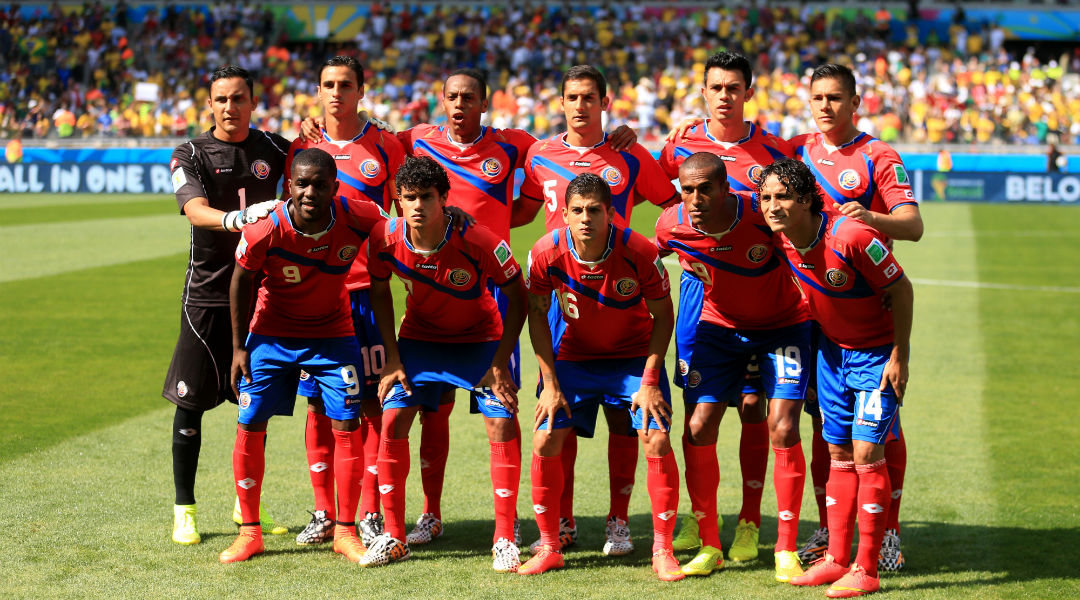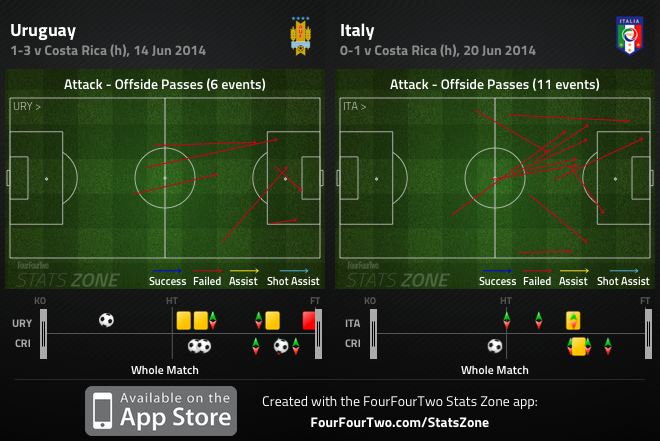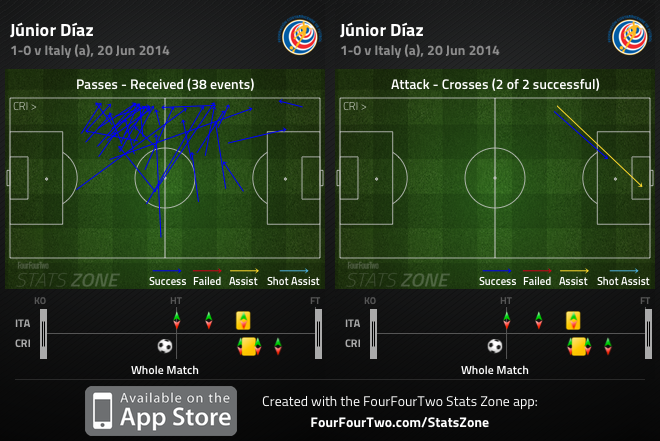How Costa Rica bamboozled Brazil 2014
Group D whipping boys? Not a chance, says Michael Cox of the tactically astute Central Americans...

The final day of Group D was so dramatic, with so many storylines, that it was difficult to tell what to concentrate on.
There was Diego Godin’s late winner against Italy, which sent the South Americans through and eliminated the Azzurri. There was also a controversial Claudio Marchisio red card which turned the game, and of course Luis Suarez’s already-infamous bite on Giorgio Chiellini.
Don’t forget Daniele De Rossi’s post-match rant at Mario Balotelli, or the resignation of Cesare Prandelli – and then there’s the fact England’s goalless draw with Costa Rica meant the Three Lions finished the World Cup without a single victory.
But this overlooks the biggest story. The best story. The proper football story. And that’s the fact Costa Rica – Costa Rica! – qualified for the knockout stage by beating Italy and Uruguay, before earning the point against England they knew would be enough to secure top slot. Barely given a chance of getting out of the group, instead they deservedly topped it.
Get FourFourTwo Newsletter
The best features, fun and footballing quizzes, straight to your inbox every week.
The key to Costa Rica’s success has been their flexible tactical approach. In the 3-1 victory over Uruguay they started by defending very deep, which surprisingly forced their opponents to hit a succession of long balls towards Edinson Cavani, who got little change out of the three Costa Rican centre-backs. The Central Americans conceded from a penalty, their only concession so far, but in open play they were extremely solid.
Against Italy, however, they changed their tactics, pushing high up the pitch and using an aggressive defensive line against Mario Balotelli. This was combined with some heavy pressing in midfield at the start of the contest, although as the closing down dropped towards half-time, they became exposed to Balotelli’s runs in behind, and relied upon him missing a glorious chance when through on goal against Keylor Navas.
They heeded the warning, and in the second half, at 1-0 up, defended closer to their own goal. But their defence still played excellently as a unit, and like Uruguay before them, Italy fell foul of Costa Rica’s offside trap.

They stuck with a deep approach against England when they didn’t need to win, but there’s nothing to suggest they’re a purely defensive side – they can defend, but they can also attack.
The key to their attacking is the wing-backs, who are capable of acting as extra defenders or extra midfielders, and both have contributed crucial crosses in his tournament.
On the right, Christian Gamboa repeatedly sprinted forward against Uruguay, overlapping energetically and whipping in a wonderful ball for Joel Campbell’s coolly-taken equaliser. On the basis of that match, it seemed Gamboa was the sole wing-back threat.
On the opposite flank, Junior Diaz looked more uncomfortable. Throughout qualification, coach Jorge Luis Pinto had played Everton’s Bryan Oviedo on that flank, but his unfortunate injury meant Pinto was without a proper option on the left.
Diaz, however, has stepped up. Son of Enrique Diaz, a Costa Rican international in the 1980s who also played on the left, Diaz is a basic but effective player. He’s not the most confident in possession: his first touch is often poor, and he can misplace passes.
However, Diaz is the archetypal wing-back, because he boasts two major qualities. He’s got plenty of energy, and he can whip in brilliant crosses. His delivery for Bryan Ruiz’s headed winner against Italy is one of the best crosses of the tournament – and that is a very strong field in a World Cup featuring plenty of attacking full-backs.

This World Cup has also witnessed plenty of successful three-man defences, and it’s often felt like opponents have forgotten how to cope with wing-backs. Should the wide midfielders pick them up? If so, what happens when they’re dragged back into the defensive third? Should the wing-backs be the responsibility of the full-backs instead? And then, who picks up the wide midfielders drifting inside?
It’s a problem none of Costa Rica’s opponents have solved. They haven’t lost a game, they haven’t conceded a goal from open play – and most surprisingly, they haven’t really been outplayed.
With a favourable draw against Greece in the second round, there’s every chance of Costa Rica reaching the quarter-finals. Forget about Suarez’s brutishness, an unfancied underdog upsetting the odds is what the World Cup is all about.
Follow every World Cup game live - or analyse it later - with Stats Zone
